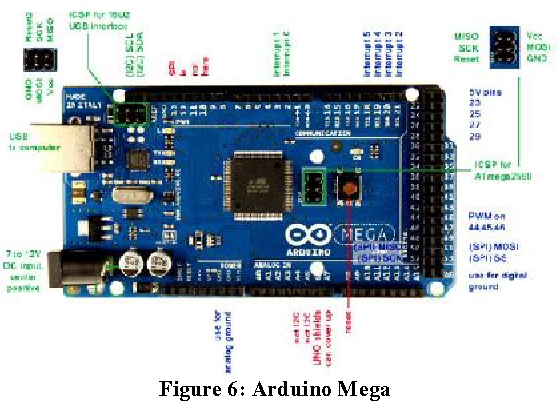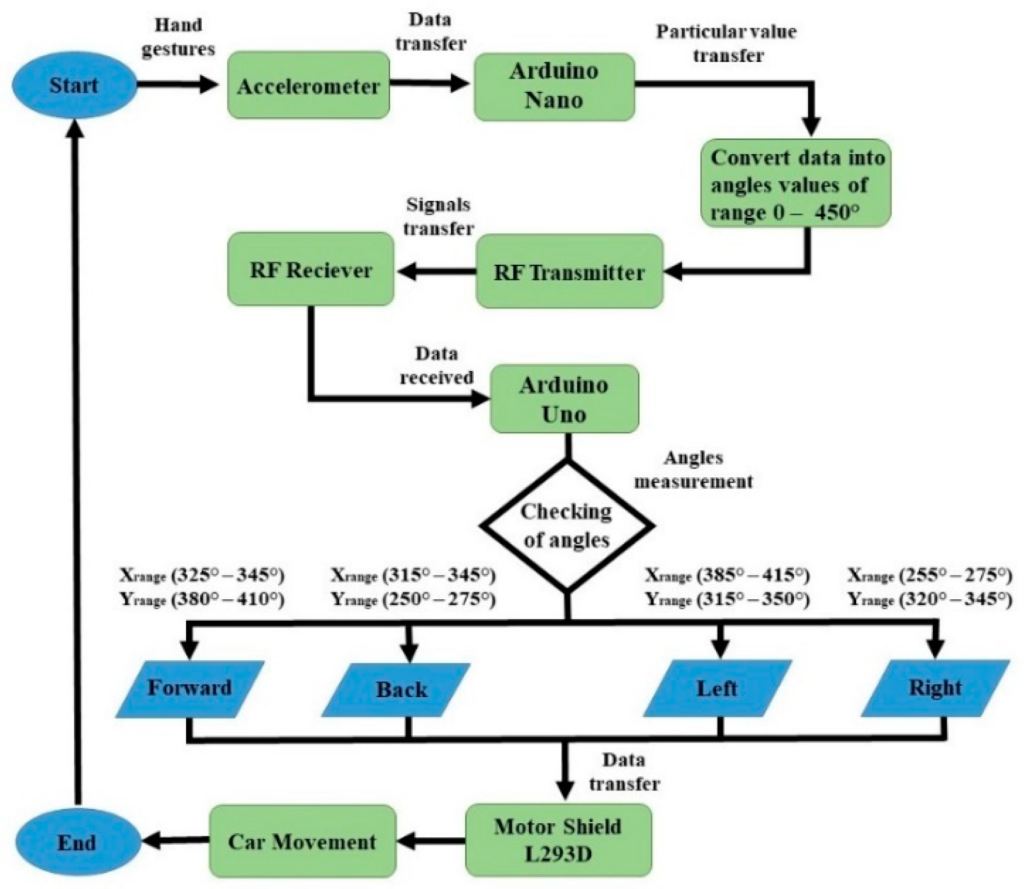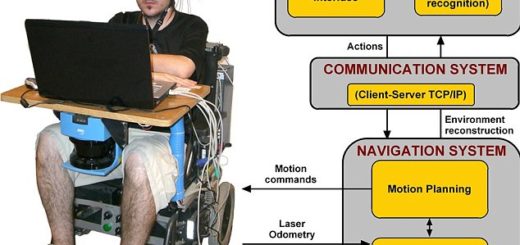Human Voice Controlled Robot Embedded with Real Time Obstacle Detection and Avoidance

I. INTRODUCTION
As we all know in today’s world one of the most
powerful and rapidly developing devices is a
smartphone and all the credit goes to powerful processor
chips and their mode of communication. The Internet of
Things is dominating the world seamlessly. And with
increasing developments in this field robots can now be
controlled with lesser direct human intervention to
achieve a more natural interaction with machines.
Smartphones are powerful devices capable of
Speech recognition detects the person behind the
speech. Technically, it draws out the words that are
spoken whereas voice recognition purposes. For this
research, just to make it user-friendly, Voice
Recognition is the best identifies the voice that is
speaking. Speech recognition focuses on what was said
and voice recognition focuses on the person who spoke
it. The underlying technologies do overlap but they
serve very different methodology to control this robot
III. WORKING OF THE ROBOT
Algorithm
Start.
Establish the connection of Bluetooth module and the
Android Application.
Once connected, give predefined commands
through the mobile handset to the robot.
• Characters that are read from a single word on
the Android application.
• This
will
be
sent
wirelessly to Bluetooth module HC-05.
• HC-05 will automatically transmit it serially to
the Arduino UNO.
• Arduino UNO will perform action on the DC
motors according to the command read.
• While moving Ultrasonic sensors will detect the
obstacles.
• Once detected the Motors will slow down and
stop.
• By the time we can provide the next command.
• Stop.
B.Preprogrammed Commands for Robot:
• Forward: Activates both motors at slow speed
and moves it forward.
• Backward: Activates both motors at slow speed
and moves it backward.
• Fast Forward: Activates both motors at full speed
and moves it fast forward.
• Fast Backward: Activates both motors at full speed
and moves it backward.
• Slow Right: Activates left motor and makes a left
turn.
• Slow Left: Activates right motor and makes
D.Hardware•
Used
Arduino UNO
The Arduino Uno is an open-source
microcontroller. A microcontroller is a
compact IC designed to do a specific task in a
system. The role here is to respond to the read
commands accordingly, which are pre-
programmed in the microcontroller and is
linked with the motor driver. The Uno is a
micro-controller board based on the
ATmega328P chip having 14 digital
input/output pins, 6 analogue inputs. It also
contains 16 MHz quartz crystal, a USB
connection, a power jack, an ICSP header and
a reset button.

E.Software•
Used
Arduino IDE
The
Arduino
Integrated
Development
Environment – or Arduino Software (IDE) –
contains a text editor for writing code, a message
area, a text console, a toolbar with buttons
containing common functions and a series of
menus. The programs are then uploaded to the
Arduino hardware. Programs written are called
sketches which are written in the text editor and
are saved with the file extension (.ino). The
editor provides features such as cutting/pasting
and searching/replacing text. The message area
gives feedback while saving and also displays
errors. The console displays text output by the
IDE. The configured board and serial port are
displayed at the bottom right-hand corner of the
window. The verification and uploading of the
programs, creations, opening, and saving
sketches, and opening the serial monitor can be
done using the buttons of the toolbar.

Journal of Engineering Research & Technology (IJERT)
ISSN: 2278-0181
ICSITS – 2020 Conference Proceedings
Android Application
The Android Application lets you connect to
HC-05 module via Bluetooth and allows you
to send signals to the Arduino so that it can
perform desired operations successfully. The
Application sends 5 signals, numbers from 1
to 5 that are used to prepare a sandwich deal
accordingly.
IV. BLOCK DIAGRAM
The Bluetooth module is connected to the android
application which from which the Arduino reads
commands. After processing them the Arduino
activates motors accordingly with the help of motor
driver L298D. A battery is used to power the whole
robot.
CONCLUSION AND FUTURE SCOPE
•
•
We can say that Voice controlled robots can
certainly dominate the future market for many
industrial and domestic purposes related to
automating daily tasks
Though it requires several tests but the robot
works quiet well with very less errors in
recognizing voice commands

more information contact 7510834013


































